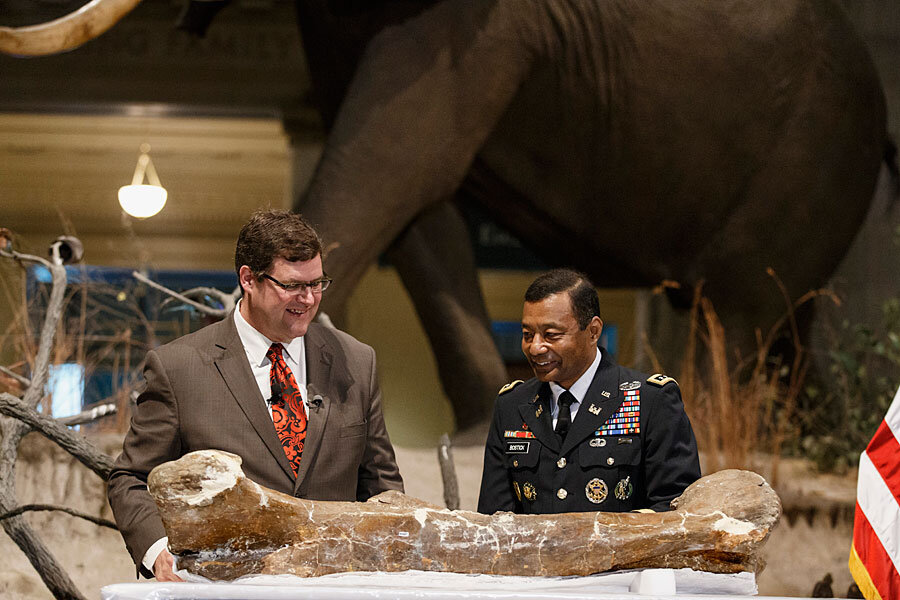Tyrannosaurus rex settling in to its new home in Washington, DC
Loading...
| Washington
More than 100 years after dinosaurs were first displayed on the National Mall, T. rex — the king — is joining the Smithsonian collection after a 2,000-mile journey from Montana.
Paleontologists and curators unveiled parts of a nearly complete Tyrannosaurus rex skeleton Tuesday, including its jaw with teeth as big as bananas, at the National Museum of Natural History. FedEx delivered the dinosaur bones in a special truck carrying 16 carefully packed crates that were kept at room temperature for the four-day trip.
A large leg bone and the T. rex teeth drew "ahs" as Museum Director Kirk Johnson told a crowd that the skeleton ranks as one of the top five T. rex skeletons discovered because it's about 85 percent complete.
"It lay in the ground much as it had died on the shores of a stream in Montana just over 66 million years ago," Johnson said.
It was discovered in 1988 on federal land in Montana and is one of about half a dozen nearly complete T. rex skeletons that have been uncovered.
The prize fossils have been tough to acquire. The Smithsonian set out to buy one at auction in 1997 but was outbid for that T. rex named Sue. She went to Chicago's Field Museum for $7.6 million.
Now the Smithsonian's specimen could become the most prominent with its new home in one of the world's most-visited museums. About 7 million people visit the natural history museum each year, and it offers free admission.
Kathy Wankel, a Montana rancher who discovered the bones in 1998 during a camping trip, said she initially spotted about 3 inches of bone sticking out of the ground and dug out a small arm bone. She said she's proud to see the fossil in a national museum.
"We were so thrilled we had found a bone; we called that a mega find," she said at the museum. "But I think now this is a mega find."
Paleontologists from the Museum of the Rockies in Bozeman, Mont., excavated the fossil, and it's been housed there for the past 25 years. At the Smithsonian, the skeleton will be mounted upright for the first time.
Many people think of the T. rex as the ultimate dinosaur, and it's the first thing they want to see, paleontology curator Hans Sues said. Its name is a combination of Greek and Latin meaning "king of the tyrant lizards," and it was one of the largest predators to live on land.
"In some ways, I think of it as the most American of all dinosaurs: this big, huge animal that was dominating its ecosystem," Sues said.
Scientists want to learn more about how T. rex related to other animals and what its short arms were used for.
Visitors can get their first look over the next six months as curators unpack, examine and 3D scan the skeleton. But it will take five years for the museum to overhaul its dinosaur hall, with the T. rex mounted as the centerpiece of a $48 million gallery devoted to the history of life on Earth. It's slated to open in 2019.
While pieces of the exhibition have been updated over time, this will be the first comprehensive reimagining of the dinosaur hall, Johnson said.
"There's so many things that have happened in science in the last 100 years that this will be a great new hall," he said.
The T. rex is on a 50-year loan from the U.S. Army Corps of Engineers to the Smithsonian that could be extended.
Washington's current 103-year-old dinosaur hall closes April 27 for renovations. A temporary dinosaur exhibit will open later this year.







